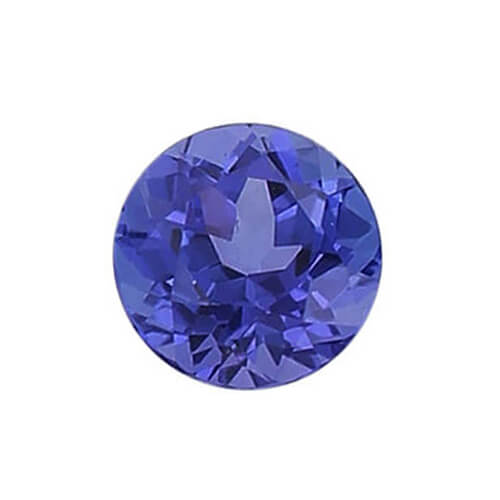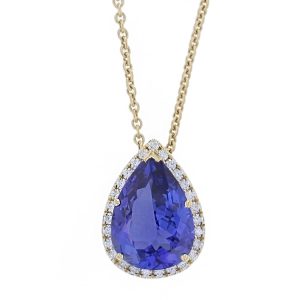-
Characteristics
Tanzanite is the blue/violet colour variety of the mineral Zoisite which naturally occurs in a wide range of colours. The colour of tanzanite is almost always produced or enhanced by heating brown or green zoisite. Since heat treatment is universal, it has no effect on price, and finished gems are assumed to be heat-treated.
Tanzanite has a range of blue colours that place it in competition with sapphire, blue topaz, and aquamarine. The top colour for tanzanite is a vivid blue. The size of a tanzanite gem influences its colour. If you have two stones of equal saturation, the larger stone will have a richer apparent colour. Tanzanite is pleochroic – it appears to be different colours when viewed from different directions – purple to blue.
Tanzanite is transparent, often with high clarity.
-
Durability & Care
Tanzanite has a hardness of to 6 to 6.5 on the Mohs scale which is low enough to be vulnerable to scratching during normal wear. Tanzanite has one direction of perfect cleavage that could result in the gem being chipped or broken if it receives a sharp impact. Tanzanite is also sensitive to sudden temperature change and is more subject to breakage at that time. Tanzanite is best suited for earrings, pendants that will not encounter abrasion and impact that is common to rings. Always remove any tanzanite jewellery prior to playing sports, exercising or doing any household chores.
Care should be taken when wearing or storing them around other gems and jewelry. If possible, wrap them individually in a soft cloth or place them separately inside a fabric-lined jewellery box to prevent stones from rubbing against each other. As with most other gems, avoid the use of ultrasonic cleaners and steamers and do not use any harsh chemicals or cleaners, such as bleach or sulfuric acid. Use only a mild soap or detergent and warm to room-temperature water to wipe down your stones with a soft cloth or brush.
Heat-treated stones hold their colour and are unlikely to fade under the normal light exposure and in the temperature range of the human environment.

Tanzanite
Tanzanite is one of the birthstones for December and the 24th wedding anniversary gemstone.
Tanzanites are very rare. They are only found in a 20-square-mile area known as the Merelani Hills in Northern Tanzania, near the city of Arusha and Mount Kilimanjaro. Masai tribesman Ali Juuyawatu is said to have discovered the first tanzanite crystal in 1967.



